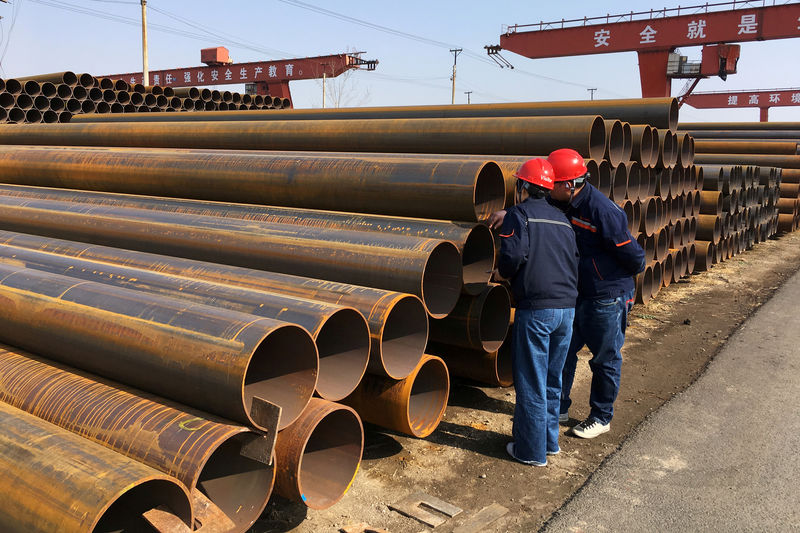 © Reuters. FILE PHOTO: Workers inspect steel pipes at a steel mill of Hebei Huayang Steel Pipe Co Ltd in Cangzhou
© Reuters. FILE PHOTO: Workers inspect steel pipes at a steel mill of Hebei Huayang Steel Pipe Co Ltd in CangzhouBEIJING (Reuters) – China’s factory-gate inflation slowed for a seventh straight month in January to its weakest pace since September 2016, raising concerns the world’s second-biggest economy may see the return of deflation as domestic demand falters.
Consumer inflation, meanwhile, eased in January from the previous month due to falling food prices, official data showed on Friday.
China’s producer price index (PPI) in January rose a meagre 0.1 percent from a year earlier, a sharp slowdown from the previous month’s 0.9 percent increase, the National Bureau of Statistics (NBS) said on Friday. Analysts polled by Reuters had expected producer inflation would slow to 0.2 percent.
While tame inflation gives authorities the flexibility to ease monetary policy to shore up slowing economic growth, deflationary risks could further hurt corporate profitability.
On a monthly basis, the PPI fell 0.6 percent, moderating from a 1 percent decrease in December.
Recent factory surveys show weakening domestic orders and shrinking business activity, with both official and private sector reports pointing to growing strains in China’s manufacturing sector, a key source of growth and jobs.
Domestic demand for industrial goods and services has eased in recent months as the government’s multi-year campaign to curb corporate debt and risky lending practices crimps capital spending and corporate investment.
Prices for raw materials fell in January for the first time in over two years, swinging from an 0.8 percent rise in December. Price rises in the production sector also turned negative.
Easing prices have already weighed on corporate profitability in the vast industrial sector as profits shrank for a second straight month in December.
The CPI rose 1.7 percent in January from a year earlier, slower than the 1.9 percent increase in December and below expectations of a 1.9 percent gain.
On a month-on-month basis, the CPI rose 0.5 percent.
The food price index in January rose 1.9 percent from a year earlier, down from December’s reading of 2.5 percent, while non-food inflation remained flat at 1.7 percent.
Fusion Media or anyone involved with Fusion Media will not accept any liability for loss or damage as a result of reliance on the information including data, quotes, charts and buy/sell signals contained within this website. Please be fully informed regarding the risks and costs associated with trading the financial markets, it is one of the riskiest investment forms possible.
Source: Investing.com




























